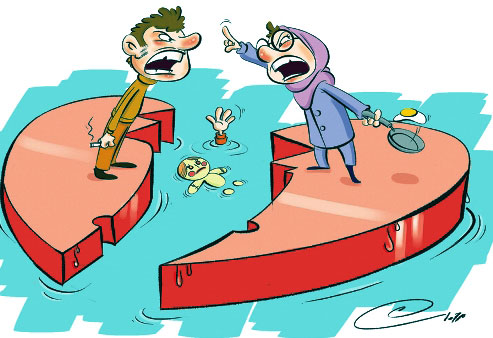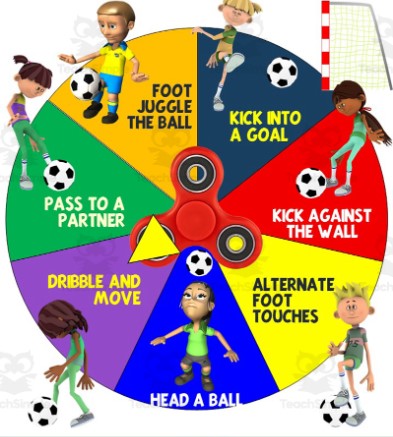ابراهیمی بجدنی، ف.، و بنی سی، پ. (1399). پیشبینی قلدری سایبری بر اساس ویژگیهای شخصیتی، هوش هیجانی و هوش معنوی در نوجوانان. پیشرفت های نوین در علوم رفتاری، 47(5)، ۱۶-۱.
بیرامی، م.، و هاشمی، ت.، و فتحی آذر، ا.، و علایی، پ. (1391). قلدری سنتی و سایبری در نوجوانان دختر مدارس راهنمایی: نقش کیفیت ارتباط معلم - دانش آموز. روان شناسی تربیتی (روانشناسی و علوم تربیتی)، 8(26)، 152-175.
پژوهی، ط.، و نادی، م.، و سجادیان، ا. (1399). تحلیل تماتیک مؤلفههای مرتکبین قلدری سایبری در دانشآموزان دبیرستانی: یک مطالع کیفی استقرایی مبتنی بر متن. نوآوری های آموزشی، 75(19)، 63-78.
صدیقی ارفعی، ف.، و تابش، ر.، و جعفری ده آبادی، م. (1399). تاثیرآموزش مهارت های جرات ورزی بر دانش آموزان دختر قربانی قلدری سایبری در مدارس دوره متوسطه دوم. انتظام اجتماعی، 12(3 )، 121-140.
شمس زاده، ا.، و جایروند، ح.، و بختیارپور، س.، و مکوند، ب. (1400). پیش بینی قلدری سایبری در دانش آموزان تیز هوش بر اساس کیفیت ارتباط با والدین با نقش میانجی اعتیاد به تلفن هوشمند. پژوهش های انتظامی - اجتماعی زنان و خانواده، 9(1)، 230-252.
نویدیان، ن.، (1394)، بررسی رابطه قلدری با خودکارآمدی اجتماعی و هیجانی در دانش آموزان ابتدایی، اولین همایش علمی پژوهشی روانشناسی، علوم تربیتی و آسیب شناسی جامعه، کرمان، 7 صفحه.
Backus, A. S. (2010). The relationship between bullying behaviors and perceived school connectedness among middle school students (Doctoral dissertation, Kent State University).
Brewer, G., & Kerslake, J. (2015). Cyberbullying, self-esteem, empathy and loneliness. Computers in human behavior, 48, 255-260.
Chu, B. C., Hoffman, L., Johns, A., Reyes-Portillo, J., & Hansford, A. (2015). Transdiagnostic behavior therapy for bullying-related anxiety and depression: Initial development and pilot study. Cognitive and Behavioral Practice, 22(4), 415-429.
Craig, W., Boniel-Nissim, M., King, N., Walsh, S. D., Boer, M., Donnelly, P. D., ... & Pickett, W. (2020). Social media use and cyber-bullying: a cross-national analysis of young people in 42 countries. Journal of Adolescent Health, 66(6), S100-S108.
Gamez-Guadix, M., & Gini, G. (2016). Individual and class justification of cyberbullying and cyberbullying perpetration: A longitudinal analysis among adolescents. Journal of Applied Developmental Psychology, 44, 81-89.
Heirman, W., & Walrave, M. (2012). Predicting adolescent perpetration in cyberbullying: An application of the theory of planned behavior. Psicothema, 24(4), 614-620.
Hinduja, S., & Patchin, J. W. (2008). Cyberbullying: An exploratory analysis of factors related to offending and victimization. Deviant behavior, 29(2), 129-156.
Juvonen, J., Graham, S., & Schuster, M. A. (2003). Bullying among young adolescents: The strong, the weak, and the troubled. Pediatrics, 112(6), 1231-1237.
Li, J., Sidibe, A. M., Shen, X., & Hesketh, T. (2019). Incidence, risk factors and psychosomatic symptoms for traditional bullying and cyberbullying in Chinese adolescents. Children and Youth Services Review, 107, 104511.
Livazović, G., & Ham, E. (2019). Cyberbullying and emotional distress in adolescents: the importance of family, peers and school. Heliyon, 5(6), e01992.
Mason, K. L. (2008). Cyberbullying: A preliminary assessment for school personnel. Psychology in the Schools, 45(4), 323-348.
Palermiti, A. L., Servidio, R., Bartolo, M. G., & Costabile, A. (2017). Cyberbullying and self-esteem: An Italian study. Computers in Human Behavior, 69, 136-141.
Patchin, J. W., & Hinduja, S. (2006). Bullies move beyond the schoolyard: A preliminary look at cyberbullying. Youth violence and juvenile justice, 4(2), 148-169.
Peled, Y., Medvin, M. B., Pieterse, E., & Domanski, L. (2019). Normative beliefs about cyberbullying: comparisons of Israeli and US youth. Heliyon, 5(12), e03048.
Perren, S., Dooley, J., Shaw, T., & Cross, D. (2010). Bullying in school and cyberspace: Associations with depressive symptoms in Swiss and Australian adolescents. Child and adolescent psychiatry and mental health, 4(1), 1-10.
Rigby, K. (2012). Bullying Interventions in Schools: Six Basic Approaches. John Wiley & Sons.
Shaw, R. J., Currie, D. B., Smith, G. S., Brown, J., Smith, D. J., & Inchley, J. C. (2019). Do social support and eating family meals together play a role in promoting resilience to bullying and cyberbullying in Scottish school children?. SSM-population health, 9, 100485.
Stockdale, L. A., Coyne, S. M., Nelson, D. A., & Erickson, D. H. (2015). Borderline personality disorder features, jealousy, and cyberbullying in adolescence. Personality and Individual Differences, 83, 148-153.

















